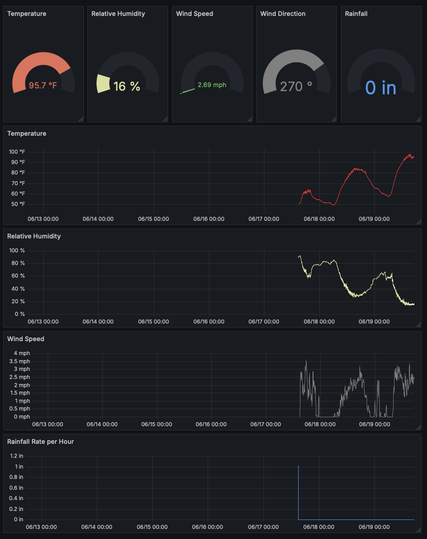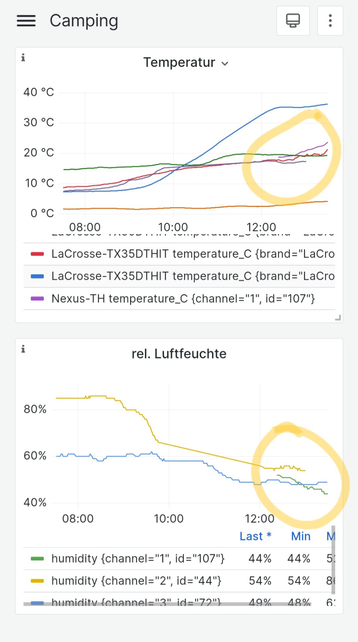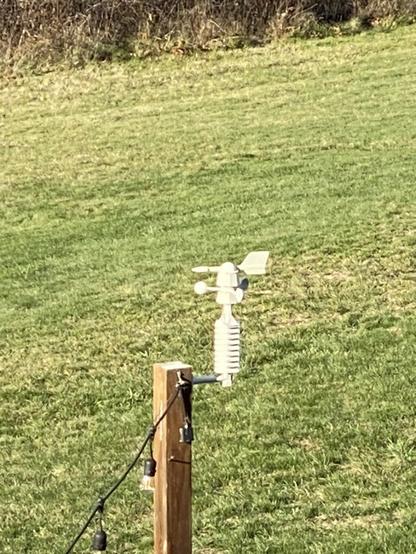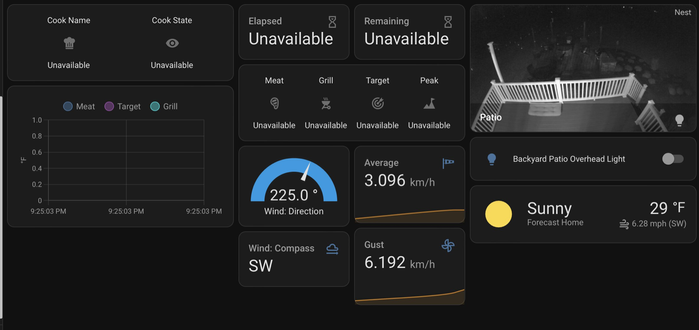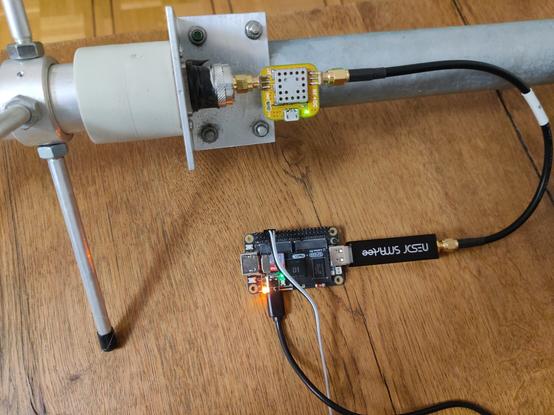Grafana is so awesome. It's abilities coupled with those of the Flux language make things so easy. I am just starting to scratch the surface of what I can display.
#RTL433
This seems to be an issue with rtl_433 while using -F "influx://", not an issue with the firewall or InfluxDB docker container.
I can run a test python script from the same machine that is running the rtl_433 tool and write successfully to the remote InfluxDB instance. Also tried the same and different API Tokens as well as the same and different buckets just to check.
Unclear why rtl_433 can only write to a local InfluxDB instance.
I've been learning a lot about the rtl-433 library used with an RTLSDR v4 dongle and trying to capture data from my AcuRite 5 in 1 weather station.
Debian 12 currently has the following versions available through the package manager:
librtlsdr-dev (0.6.0-4)
rtl-sdr (0.6.0-4)
rtl-433 (22.11-1)
However, it seems like the driver for the v4 dongle is too old to properly support it. I kept getting the error:
bitbuffer_add_bit: Warning: row count limit (50 rows) reached
Über einen zweckentfremdeten DVB-T-Empfänger landen die Messwerte diverser Funkthermometer in unserer Home-Assistant-Instanz. Dafür wird in der Konfigurationsdatei /etc/rtl_433.conf eine MQTT-Ausgabe definiert:output mqtt://[…],events=rtl_433[/model][/id]
Die ID der Thermometer ändert sich aber mit jedem Batteriewechsel. Weshalb die Thermometer, gemäß einem Tipp aus dem Netz, manuell in der YAML-Konfiguration von Home Assistant angelegt sind. Dadurch lässt sich dort die ID anpassen, ohne dass sich die HA-interne Entität ändert (was sonst z. B. für kontinuierliche Messreihen in der Oberfläche problematisch wäre).
Da allerdings unsere von HA unabhängigen Empfangsdisplays die Thermometer nach jedem Batterietausch problemlos wiederfinden, kam der Gedanke, dass dann doch auch für HA die Erkennung nach sich nicht änderndem Kanal anstatt wechselnder ID gangbar sein müsste. Also /etc/rtl_433.conf abgeändertoutput mqtt://[…],events=rtl_433[/model]/C[channel]
und auch in der HA-Konfiguration die Topic-Parameter entsprechend angepasst:
state_topic: rtl_433/Ambientweather-F007TH/C1
json_attributes_topic: rtl_433/Ambientweather-F007TH/C1Funktioniert bisher wunderbar.
I'm trying to receive a weather station at 868.3 MHz as well as some heat cost allocators and water meters at 868.95 MHz, both via #rtl_433.
Up until now, I did this using
rtl_433 -f 868.3M -f 868.95 -H 15 -s 250k -Y autolevel -Y magest -M noise -M level
i.e. frequency hopping. But shouldn't I be able to capture both frequencies simultaneously with a higher sample rate? But with "-f 868.3M -s 2M" nothing shows up anymore at all.
Edit: Solved! https://chaos.social/@scy/113068997126643230
@hennichodernich Na, da schau an: github.com/merbanan/rtl_433 unterstützt die hiesig vorhandenen Thermo-/Hygrometer TFA 30.3208.02. Insofern bräuchte ich für den Empfang also nur noch eine günstige Hardware, die mit github.com/osmocom/rtl-sdr harmoniert.
Vielleicht bekomme ich auf diesem Weg sogar auch noch die Elro- und FreeTec-Sachen eingebunden, die hier historisch gewachsen nach wie vor im Einsatz sind. Danke für den Schubser in Richtung 433 … 💡
I'm sure I've tried rtl_433 before, but looking at it again I'm super impressed by the lengthy list of over-the-air data protocols it decodes for weather stations, tire pressure measurement sensors, energy meters, water leak detectors, and so on and so on.
https://github.com/merbanan/rtl_433 or `brew install rtl_433`
Now, to dig out my RTL-SDR tuner stick + suitable antenna to try this out, and compare results with my #FlipperZero .
tnx @vees
Hmm. Jemand mit #rtl433 -Skills hier? Der Nooelec v5 (https://www.amazon.fr/NooElec-NESDR-SMArt-Aluminium-antennes/dp/B01GDN1T4S/) tut super auf 868 MHz, aber auf 433 bekomme ich oft nur ein bis zwei der drei Bresser-Sensoren, Entfernung <7m :-(
Notes for March 13-19
This is an abridged list of the non-work things I accomplished this week.(...)
#hardware #weasyprint #sdf #lenovo #rtl433 #godot #pytorch #stablediffusion #rdp
I’m a weather nerd from a family of weather nerds. Just replaced the sensor array in my local weather station - http://users.on.net/~dags1968/weather/index.html It’s amazing that open source developers building on each other’s work can deliver a system that literally grabs data out of the air and makes a pretty web page! #weewx #weewxsdr #rtl433 #weather
Today's addition, a cheap weather station added to my patio and #rtl433 on my #HomeAssistant just picked up its #RF signal and auto-discovered it! Now when I'm smoking a #brisket in my grill I can monitor the wind and grill temp to see if there is correlation as I suspect. 🤓🧑🍳 #bbq #homeautomation
My plan is to read the data with a #RTLSDR dongle & #RaspberryPi then decode it with #RTL433 & log it to #HomeAssistant
Lunch break are useful to #3dprint 😜
I will post a picture when finished, but basically I plan to generate different pictures with #matplotlib. The push btn let you switch between different graphs. Data are directly read from my own weather station, recorded in #influxdb with the #sdr dongle and #rtl433.
Ideas welcome ! Thanks
